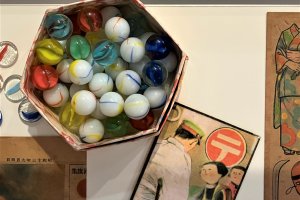Ono wasn’t just beautiful. She was the embodiment of beauty. Poetry is beauty. Art is beauty. Nine centuries after Ono graced the earth, Sadako was born. She was the personification of her parents and grandparents' dreams, an heir to the family's traditional shop selling pastel textiles and Ryukyu arts. Remember the Aloha Shirt? Well, it was born in the streets of Okinawa.
“So short is the life of a flower, yet all the hardships it endures.” This was about a young lady in a post-war movie Floating Clouds, but equally, it could be about Sadako’s parents, who were torn between hope and fear as they sent their daughter to escape a looming war.
August 11, 1942, was a beautiful sunny day. The ticker tapes tied the thousand elementary school children onboard Tsushima Maru with their parents waving to them from Naha Port. They were filled with hope, possibly a sense of release that overshadowed the glimpses of fear and sadness. They will meet again, or so they thought. Just two nights later, while the children were gazing at the stars, it was torpedoed and sunk before everyone had the chance to escape, with no news of the 254 survivors reaching their parents for years.
The ocean may be dark and all-enveloping, but when you have lost a life, it seems so empty of humanity. Especially when you have just let go of your one-year-old child's ashes. For someone who is not a parent, this is hard to comprehend or to feel deeply, but if you ever put your life and soul into a dream, a baby of your creation, and see its life crushed, then you might get a glimpse of what is like to lose something dear to your heart.
How do you celebrate the birthday of the departed, when their absence fills the room, made more poignant by the empty chair and the abandoned marbles? In the fires that filled Naha during the war, there was precious little left to remember the lives of these school children, but the museum searched far and wide to find these treasures to bring home the feeling of loss, a glimpse into the hope they had for a brighter future.
Part of the joy of the Uchinachu Festival is that it brings different generations together. Mari cried, reflecting on her uncle who left by ship and never returned. She was dancing for him, and having just lost her dad made it all the more poignant. It is these festivals that allow grandkids to ask grandparents about their lives, about what happened, something that rings true at the Naha city museum, the festival, or here at Tsushima Maru Memorial Museum.
It is said that starlight is like a time machine. It may be years since that light was birthed, so by the time we see it, it is like looking into the past, a past that may not exist anymore. Looking at the school bags and the young faces captured in time at the museum is like looking at a time machine, of these stars shining brightly from the past, memories from a generation whose lives were cut short.
The survivors and founders of the museum are well and truly convinced that we should do everything we can to help make this planet we each call home, that little bit better for everyone. What they want to tell us is the dreams that each person has.
Even in the darkest times, people have dreams. They dreamed because they were alive. Now we are living in the future that they dreamed of. So as you enter the museum, let these thoughts speak to you.




























